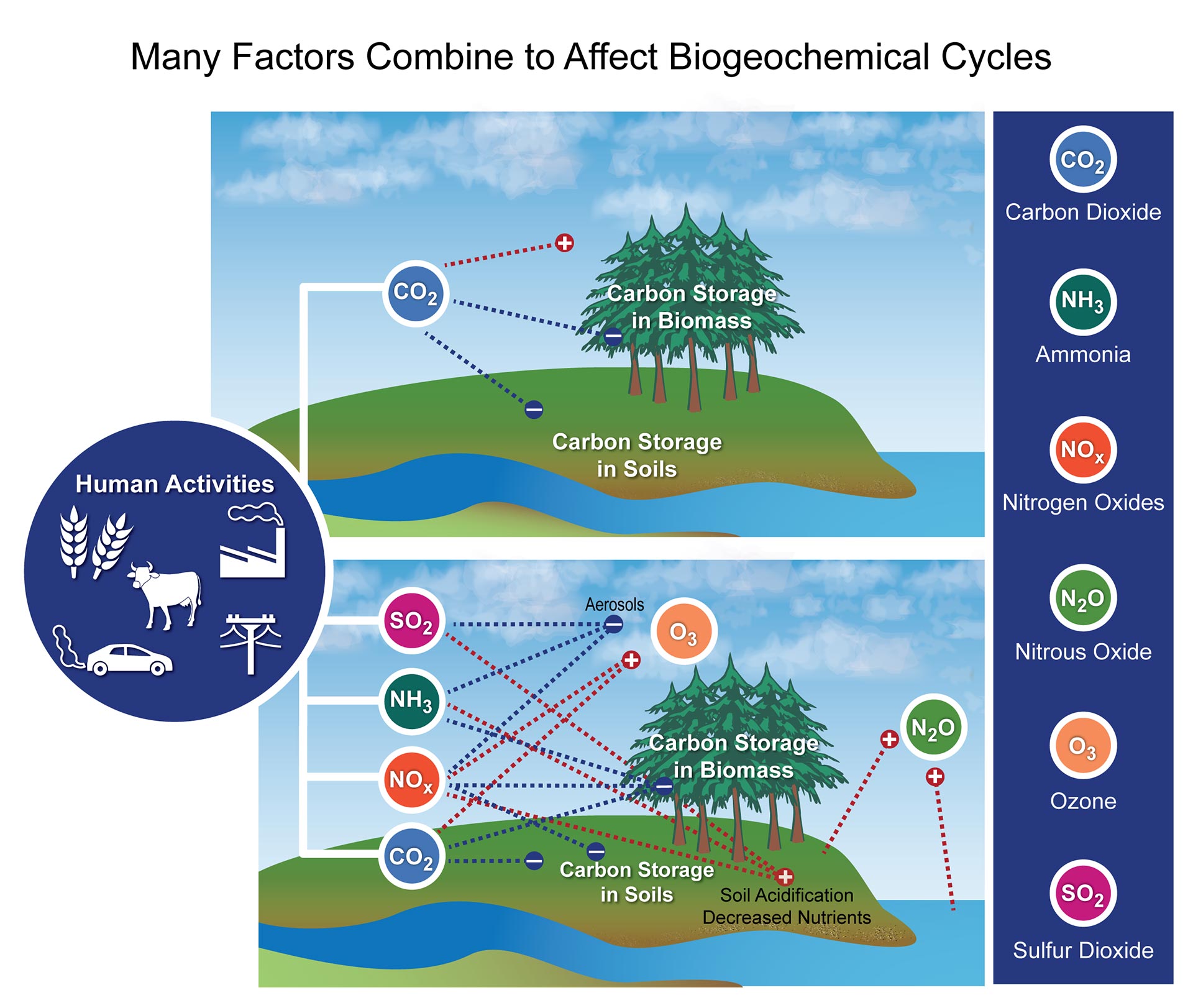Biogeochemistry
The biogeochemistry ( βίος ancient Greek bios = life, γῆ ge = earth, γεω -geo - = earth concerning χημεία chemeia = chemistry) deals with the chemical, biological and physical processes, which to the structure and functions of ecosystems or landscapes underlie. Biogeochemistry is an interdisciplinary system science whose topics include all the five geochemical spheres: the biosphere, pedosphere, hydrosphere, atmosphere and lithosphere.
Research area
The area of research is relatively narrowly focused, despite the wide definition: Biogeochemistry deals mainly with material flows into and out of systems, as well as the substance turnover in the system itself (collectively material budget ). The accounting for the flows are usually at the system boundaries. Play an important role in biogeochemical cycles such as the carbon, nitrogen, sulfur and phosphate cycle. Energy and information flows and turnover are not part of the research.
Some important current environmental problem areas are examined with the help of biogeochemical approaches:
- Soil and water acidification
- Terrestrial and aquatic eutrophication
- Forest condition, forest degradation and deforestation
- Soil from the atmosphere and soil processes
- Climate change, cause and effect, CO2 cycle
- The chemical change in the atmosphere and its impact on the vegetation
History of Biogeochemistry
As the founder of the science geochemistry applies Vladimir Vernadsky, a Russian scientist, specializing in the field of geology and mineralogy. Beginning of the 20th century, it dealt with the chemical composition of organic substances, the process and the effects of geochemical processes in which organisms are involved.
The American geochemist and limnologists George Evelyn Hutchinson is attributed to the definition of the scientific area and the principles of the new discipline.
In the late 1960s developed the geochemist James Lovelock, together with the evolutionary biologist Lynn Margulis, the Gaia hypothesis, according to which the biosphere together with the nonliving components of the Earth's surface behaves as an independent self-regulating organism, and the biosphere, the composition of the atmosphere regulated significantly and thereby the climate stabilized. This theory is based primarily on biogeochemical contexts. Although some theses of the Gaia theory are not shared by the scientific majority, they brought to this field of research for the first time more attention and in particular promoted the development of Earth system science.
Through the various environmental problems shifted the biogeochemical research in the 1980s further into the public consciousness. Through detailed study of the mass balance of ecosystems is hoped that fundamental insights into function and control of ecosystems and thus a better understanding of the causes of problems. In the 1990s and 2000s a number of numerical models have been developed for the simulation of biogeochemical processes to the feedbacks of different ecosystems, such as sediment and ocean as a biogeochemical system to better understand.
More recently developed from the Biogeochemistry out the idea of geoengineering. The term considerations to intervene in the technical way in geochemical cycles to slow to about global warming or ocean acidification.









